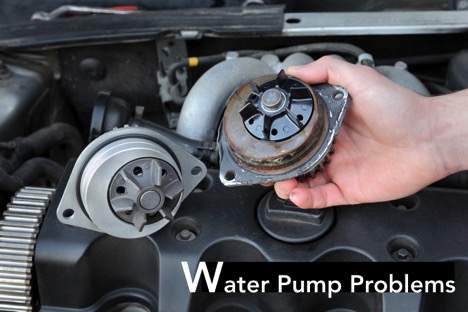Your car may still overheat with a new thermostat due to issues like a faulty cooling system, air pockets, or a malfunctioning radiator. It’s essential to check these components for proper functioning to diagnose and resolve the overheating problem effectively.
Overheating can lead to severe engine damage if left unaddressed, impacting the overall performance and safety of your vehicle. Seeking professional help to troubleshoot and rectify the issue promptly is crucial to prevent further damage and ensure your car runs smoothly on the road.
Remember, regular maintenance and timely repairs are key to a healthy, well-functioning vehicle that can serve you reliably in the long run.

Credit: www.haofa-racing.com
3. Reasons For Car Overheating With A New Thermostat
Experiencing car overheating after installing a new thermostat can be frustrating. However, there are several possible reasons why this may occur. Identifying the cause is crucial to ensure your car’s cooling system is functioning optimally. Let’s explore four common culprits:
3.1 Coolant Leakage
Coolant leakage is one of the most common reasons why a car overheats despite having a new thermostat. Coolant is responsible for absorbing and transferring heat away from the engine. When there is a leakage, the cooling system loses its ability to regulate temperature effectively, leading to overheating.
There are various reasons for coolant leakage, including:
- Worn-out or damaged hoses
- Cracked or damaged radiator
- Loose or faulty radiator cap
- Leaking gaskets or seals
Identifying the source of coolant leakage is essential in order to address the issue properly. Regularly inspecting your car’s cooling system for any signs of leakage can help prevent overheating problems.
3.2 Air Pocket In The Cooling System
An air pocket, sometimes referred to as an airlock, in the cooling system can also cause overheating even with a new thermostat. Air pockets prevent the proper circulation of coolant, disrupting the cooling process and leading to elevated engine temperatures.
Common causes of air pockets include:
- Insufficient coolant bleeding during the thermostat replacement
- Improper cooling system flush or refill
- Leakage or loss of coolant
To alleviate this issue, it is essential to properly bleed the cooling system after installing a new thermostat. Following the manufacturer’s instructions and ensuring all air pockets are eliminated can help prevent future overheating problems.
3.3 Faulty Water Pump
A faulty water pump can also be a reason for car overheating despite having a new thermostat. The water pump is responsible for circulating coolant throughout the engine, regulating its temperature. If the water pump is not functioning correctly, coolant circulation can become inadequate, resulting in overheating.
Common signs of a faulty water pump include:
- Coolant leakage near the water pump
- Unusual noises coming from the water pump
- Engine temperature fluctuation
If you suspect a faulty water pump, it is advisable to have it inspected and replaced by a qualified mechanic. Regular maintenance and timely replacement of the water pump can help prevent overheating issues.
3.4 Incorrect Thermostat Installation
Another potential reason for car overheating with a new thermostat is incorrect installation. If the thermostat is not installed correctly, it can affect the normal operation of the cooling system, leading to overheating.
Improper thermostat installation can include:
- Incorrect positioning of the thermostat
- Failure to remove air from the cooling system during installation
- Using a thermostat that is incompatible with the car’s specifications
- Not following the manufacturer’s installation instructions
To avoid this issue, it is crucial to ensure proper installation of the thermostat. Following the recommended installation procedures, using the appropriate thermostat for your car, and double-checking the positioning and bleeding of the cooling system can help prevent overheating caused by incorrect thermostat installation.

Credit: www.reddit.com
5. Troubleshooting Steps For A Car Overheating With A New Thermostat
When your car continues to overheat even after replacing the thermostat, it can be frustrating and concerning. However, there are several troubleshooting steps you can take to identify and address the issue. By following these steps, you can pinpoint the root cause of the overheating and ensure that your vehicle runs smoothly.
5.1 Checking Coolant Levels
Low coolant levels are a common cause of overheating. To troubleshoot this, check the coolant reservoir and top it off if it is low. Additionally, inspect for any leaks that may be causing the coolant level to drop.
5.2 Inspecting Hoses And Connections
Inspect all hoses and connections in the cooling system for signs of wear, cracks, or leaks. Replace any damaged components to ensure a tight seal and prevent coolant from escaping.
5.3 Testing The Thermostat
Use a thermostat testing tool to ensure that the new thermostat is functioning correctly. Check for proper opening and closing at the designated temperature to confirm that it is working as intended.
5.4 Verifying Water Pump Function
The water pump is essential for circulating coolant through the engine. Verify that the water pump is working by checking for any leaks or unusual noises. Additionally, inspect the belt driving the pump for signs of wear or slipping.
5.5 Flushing The Cooling System
Flush the cooling system to remove any debris or buildup that may be impeding the flow of coolant. Follow the manufacturer’s guidelines for proper flushing and use a cleaning solution to ensure optimal performance.
6. Prevention Tips To Avoid Car Overheating With A New Thermostat
When it comes to preventing car overheating despite a new thermostat, following these simple yet crucial steps can save you from unexpected breakdowns.
6.1 Regular Maintenance
Regular maintenance checks ensure your car’s cooling system functions optimally and helps prevent overheating issues.
6.2 Using The Correct Coolant
Ensure you use the right coolant type recommended by your car’s manufacturer to maintain proper engine temperature.
6.3 Proper Thermostat Installation
Ensure the thermostat is installed correctly to regulate engine temperature effectively and prevent overheating.
6.4 Monitoring Temperature Gauge
Monitor your car’s temperature gauge regularly to catch any signs of overheating before it escalates.
6.5 Taking Immediate Action
Take immediate action such as pulling over, turning off the engine, and seeking professional help if your car shows signs of overheating.

Credit: thegarageba.com
Conclusion
If your car is still overheating after a new thermostat, it’s essential to consider other potential causes. From a malfunctioning radiator to a faulty water pump, various issues could be at play. It’s important to have a professional mechanic inspect your car to identify and address the underlying problem and prevent further damage.